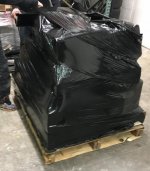nigwil
Experienced Member
Maybe there's a simpler way -- does maintenance manual explain how the devices are mapped in memory?
The various IBM maintenance manuals (and troubleshooting guides) are either user-focused or field-service technician focused and lack specific implementation details, although surprisingly you find details like connector pinouts, function-block architecture diagrams and so on. The product update bulletins sometimes hint at low-level implementation details (to explain a fix or workaround) but they are rare occurrences.
Agree, very useful tidbit; power-cycling such an old machine to do a hard-reset is very much hand-in-mouth-tense exercise. That manual though looks like a generic DR document with a few DW edits. I wonder if we will find a copy of the released CP/M-86 product (even though it doesn't appear to have any new functionality other than bug fixes). What we have is labeled a "demo" and looks like a fast hack by DR to show to IBM.info in CP/M-86 reference manual for DW (http://www.nostalgia8.nl/cpm/ibm/cpm6dwrm.pdf) -- f.e. that Control-End causes a power-on-reset, brief description of video memory layout in Section 6...






